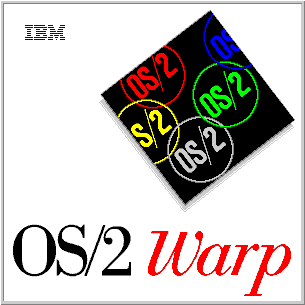OS/2 platform
I no longer have any OS/2 platform – so all of this is history now.
My last installation of OS/2 was OS/2 Warp 4.51 (Merlin Convenience Pack) on the ThinkPad T22 over Christmas 2001 and upgraded it to 4.52 (2nd Merlin Convenience Pack) in February 2002. The installation of the Convenience Packs on the ThinkPad were particularly simple and smooth, as they provided bootable CDs and I did not have to swap the diskette drive with the CD-drive (in fact DVD-drive) during the installation. It was a matter of about 10 minutes. (Compare this to MS xyz nowadays …)

The Aptiva Server used to run under OS/2 Warp 4.0, (“Merlin”) Fixpak 11 and has also been upgraded to OS/2 4.52 in March 2002.
I have used OS/2 on a daily basis since version 1.1, from 1988 up to some time in 2000. Then, my regular business work environment has become Windows 2000. The last OS/2 platform on any of my machines disappeared in the mist of November 2003, when a disk on a server crashed.
I was one of the first users of Boot Manager, which was already working with OS/2 1.3 (“Cutter”), though it was officially shipped only with OS/2 2.0 (“Yawl”). Before 2.0 went public in 1991 this feature was called “Multi-Boot”. It was a requirement of my customer, the German Telekom, who wanted to migrate their online access platform (Btx, i.e. Bildschirmtext, aka Datex-J) from IBM Series/1 to IBM Industry Computer (industrial version of PS/2’s). The Series/1 had the feature to enable a primary and an alternate system to boot. DOS and OS/2 systems up to that time never thought it necessary to boot from different hard disk partitions (it used to be C: since day one of the PC aera), so it had to be added at that time (in 1990).
For more details read about The History of OS/2 from Michal Necasek or read more on Wikipedia.
